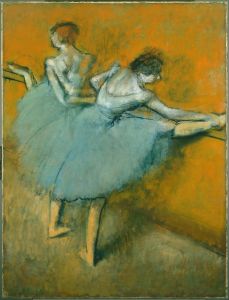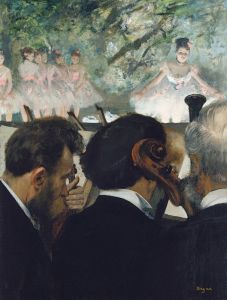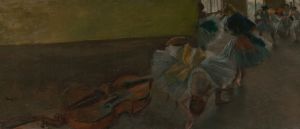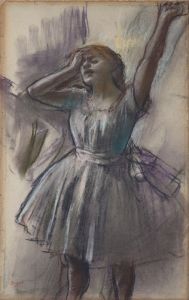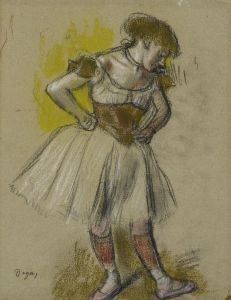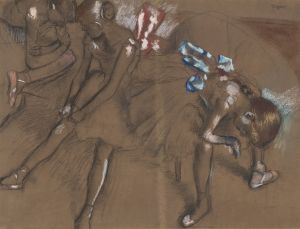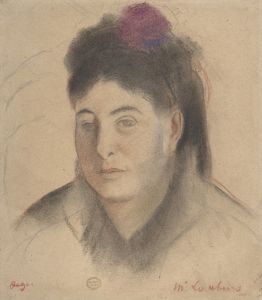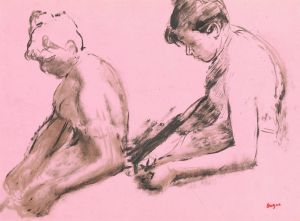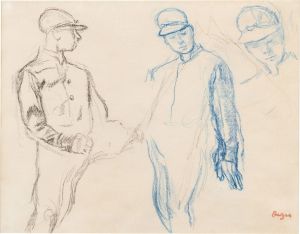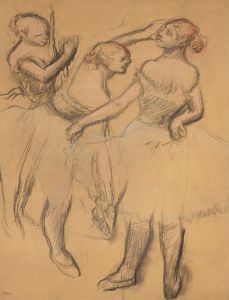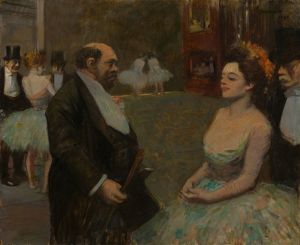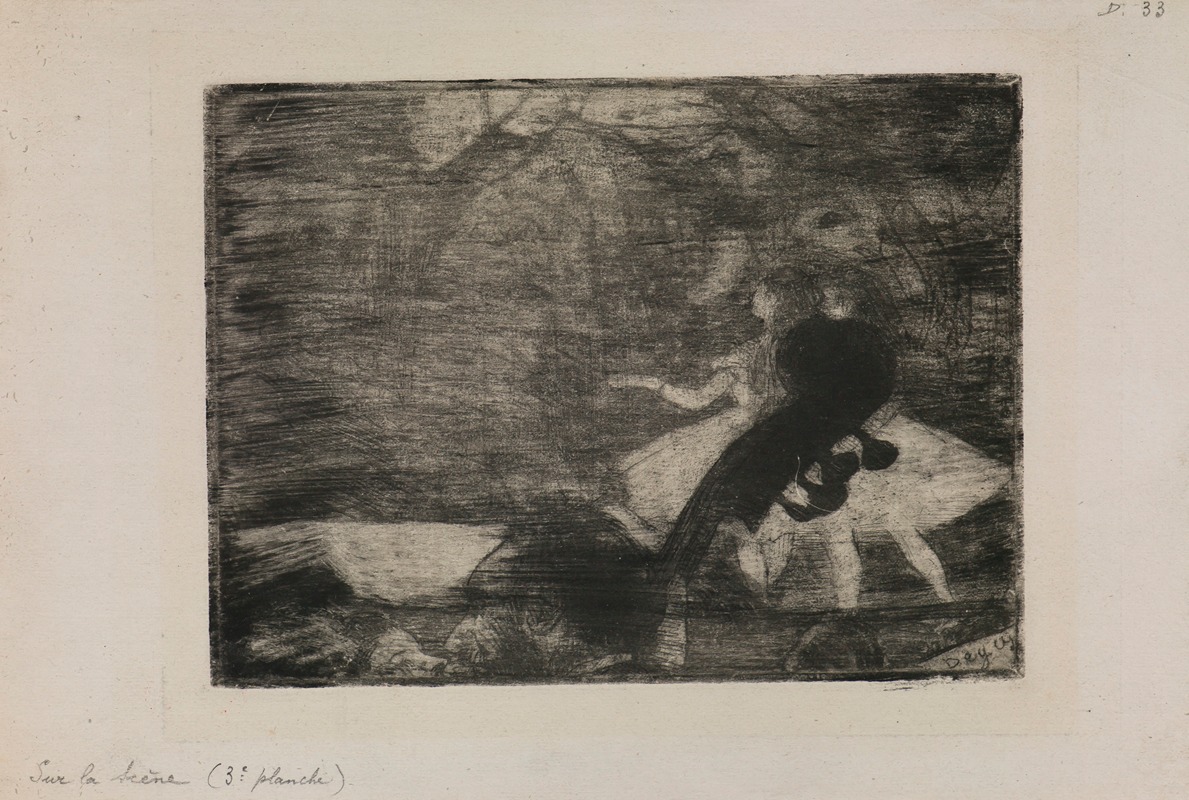
On Stage I
A hand-painted replica of Edgar Degas’s masterpiece On Stage I, meticulously crafted by professional artists to capture the true essence of the original. Each piece is created with museum-quality canvas and rare mineral pigments, carefully painted by experienced artists with delicate brushstrokes and rich, layered colors to perfectly recreate the texture of the original artwork. Unlike machine-printed reproductions, this hand-painted version brings the painting to life, infused with the artist’s emotions and skill in every stroke. Whether for personal collection or home decoration, it instantly elevates the artistic atmosphere of any space.
Edgar Degas, a prominent French artist associated with the Impressionist movement, is renowned for his depictions of dancers, capturing their grace, movement, and the behind-the-scenes reality of their lives. One of his works, On Stage I, exemplifies his fascination with the world of ballet and his innovative approach to composition and perspective.
On Stage I is a pastel drawing created by Degas in the late 19th century, a period when he was deeply immersed in portraying ballet dancers. The artwork depicts a group of ballerinas performing on stage, with a strong focus on the interplay of light and shadow. Degas often attended performances at the Paris Opéra, where he observed dancers both during their performances and in their rehearsals. This allowed him to capture not only the elegance of their movements but also the physical effort and discipline required in their craft.
The composition of On Stage I reflects Degas's interest in unconventional perspectives. The scene is framed as if viewed from the wings of the stage or from an elevated angle, giving the viewer a sense of immediacy and intimacy. This approach was characteristic of Degas, who frequently experimented with cropping and asymmetry, drawing inspiration from Japanese prints and the emerging field of photography.
Degas's use of pastel in this work demonstrates his mastery of the medium. The vibrant yet soft colors convey the texture of the dancers' costumes and the atmospheric lighting of the stage. Pastel allowed Degas to work quickly and layer colors to achieve a sense of movement and vitality, qualities that are evident in On Stage I. The dancers' poses and gestures are rendered with precision, reflecting Degas's keen observational skills and his ability to convey the fleeting nature of a moment.
While Degas is often associated with Impressionism, he did not fully embrace the label and preferred to be considered an independent artist. His focus on line, form, and the human figure set him apart from many of his contemporaries, who were more concerned with capturing the effects of light and atmosphere. On Stage I is a testament to Degas's unique artistic vision and his dedication to exploring the world of ballet.
Today, On Stage I is recognized as an important example of Degas's work with pastels and his contribution to the depiction of modern life in 19th-century Paris. The artwork is held in a private collection, and its exact creation date is not definitively documented, though it is generally attributed to the 1870s or 1880s, a period when Degas produced many of his iconic ballet scenes.





